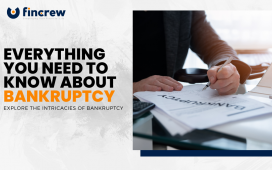Robo advisors appeal to anyone who has ever wanted a robot to clean their house or walk their dog. Indeed, clients who use the Robo advisor service don’t get their windows cleaned, or their pets cared for. Still, they get something more valuable: an opportunity to invest relatively hands-off.
What Is a Robo Advisor?
A Robo advisor is a platform that provides automated, algorithm-driven financial planning services with minimal human involvement. Robo advisors typically ask you about your financial situation and future goals through an online survey; then, the program offers investing advice and automatically supports you. Most Robo advisors offer simple account setup, goal planning capabilities, portfolio monitoring, and account services. Additionally, they provide quality customer service, comprehensive educational materials, and low fees.
How Much Do Robo Advisors Cost?
Using a robot advisor is much lower than hiring a human financial advisor. Typically, management fees range between 0.25% and 0.50% per year, but there are even free options such as Sofi Automated Investing. The fee structure of Robo advisors is similar to that of other financial advisor. For example, with an account balance of RM10,000, you might only pay RM25 a year. It is usually swept from your account and billed monthly or quarterly. Robo advisors typically don’t charge transaction fees. Most brokerage accounts charge commissions on purchases, as well as on deposits and withdrawals of money. Robo advisors typically waive these fees.
Robo Advisory Features
Portfolio Management
A Robo advisor creates the best portfolios based on an investor’s preferences. A portfolio is usually constructed based on a variant of Modern Portfolio Theory, which emphasizes the allocation of funds to stocks that do not have a perfectly positive correlation. A Robo advisor usually allocates funds to risky assets and risk-free assets according to the goals and risk profile of the investors as economic conditions change, changing the weight of complex and free support, robot-advisors monitor and rebalance the portfolio.
Tax-Loss Harvesting
By utilizing tax-loss harvesting, investors will be able to sell securities at a loss and save tax on capital gains. The process takes place at the end of a year. Investors avoid paying taxes on income by selling a security at a loss. While investing in similar security, it is imperative to maintain a portfolio allocation to benefit from a market rise. A Robo advisor automates the process so users can benefit from tax-loss harvesting with ease.
Robo Advisors: Are They Safe?
I want to point out that Robo advisors are neither safe nor risky. The riskiness of a portfolio controlled by a Robo advisor entirely depends on the investor’s preferences. Robo advisors help investors determine the risk level that suits their needs and the timeline they wish to invest within. A risk-tolerant investor will typically select a portfolio with higher returns but lower volatility (e.g., more stocks, fewer government bonds). A risk-averse investor will choose a portfolio with lower returns but lower volatility (e.g., a relatively higher concentration of risk-free securities). The ability of Robo advisors to curate personalized portfolios is due mainly to the fact that they assess each investor’s appetite for risk.





